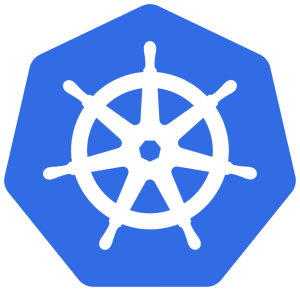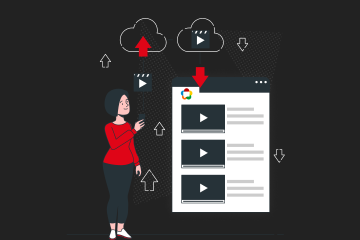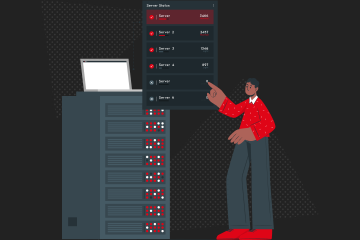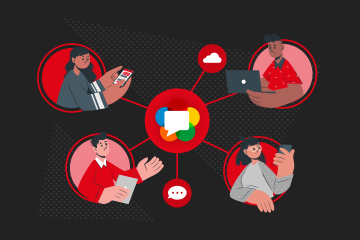A database is generally an organized collection of data stored and accessed electronically. Small databases can be stored on a file system, while large databases are hosted on computer clusters or cloud storage.
![]()
The design of databases spans formal techniques and practical considerations, including data modeling, efficient data representation, and storage, query languages, security and privacy of sensitive data, and distributed computing issues, including supporting concurrent access and fault tolerance.
Ant Media server supports several databases such as MongoDB, MongoDB Atlas (mongodb+srv), Redis, and MapDB.
MongoDB
MongoDB is a source-available cross-platform document-oriented database program. Classified as a NoSQL database program, MongoDB uses JSON-like documents with optional schemas. A record in MongoDB is a document, which is a data structure composed of key-value pairs similar to the structure of JSON objects.
MongoDB is one of the popular databases for running the Ant Media server in Ant Media Cluster Setup and is deployed by most users. It can be accessed via the command line and tools like Studio 3T and others.
How to use MongoDB with Ant Media server?
There are two ways to change the database and server mode in Ant Media Server.
Using the change_server_mode.sh
change_server_mode.sh is located under the installation directory which is /usr/local/antmedia and the method is recommended when you’re running Ant Media Server as a service
Type the following command to use MongoDB in cluster mode
sudo ./change_server_mode.sh cluster mongodb://[username]:[password]@[url]
Note: If you set username and password authentication on MongoDB, you should run change_server_mode.sh as follows:
sudo ./change_server_mode.sh cluster mongodb://[username]:[password]@[url]
MongoDB can be used in standalone mode with the below command
sudo ./change_server_mode.sh standalone mongodb://[username]:[password]@[url]
Using the start.sh script
This script is also located in the installation directory and the method is recommended when you’re running Ant Media Server in Kubernetes or a container. Starting the Ant Media Server with MongoDB in standalone mode using start.sh script
sudo ./start.sh -m standalone -h mongodb://[username]:[password]@[url]
Starting the Ant Media Server with MongoDB in cluster mode
sudo ./start.sh -m cluster -h mongodb://[username]:[password]@[url]
MongoDB Atlas (mongodb+srv)
MongoDB Atlas is a multi-cloud database service. It simplifies deploying and managing the databases while offering the versatility to build resilient and performant global applications on the cloud providers of your choice like Amazon web services and Microsoft Azure, etc.
How to use mongodb+srv in the Ant Media server?
Once you have launched the Atlas database cluster on the cloud platform of your choice, it can be used with Ant Media Server with the mongodb+srv URI.
Using the change_server_mode.sh
The following command can be used for mongodb+srv in cluster mode
sudo ./change_server_mode.sh cluster mongodb+srv://[username]:[password]@[url]
To use mongodb+srv in standalone mode
sudo ./change_server_mode.sh standalone mongodb+srv://[username]:[password]@[url]
Using the start.sh script
To use mongodb+srv in cluster mode with the start.sh script
sudo ./start.sh -m cluster -h mongodb+srv://[username]:[password]@[url]
To use mongodb+srv in standalone mode
sudo ./start.sh -m standalone -h mongodb+srv://[username]:[password]@[url]
Redis
Redis is an open-source, in-memory data store used by millions of developers as a database, cache, streaming engine, and message broker.
Also, Redis delivers sub-millisecond response times, enabling millions of requests per second for real-time applications.
There are a good number of managed services for Redis in cloud providers e.g., AWS has MemoryDB for Redis and ElasticCache for Redis, Azure has Azure Cache for Redis, etc.
How to use Redis in Ant Media Server?
The support for Redis on Ant Media Server is introduced with AMS v2.5 along with many other advancements in conference solutions and Filter plugins, etc.
Using the change_server_mode.sh
The following command can be used for Redis in cluster mode
sudo ./change_server_mode.sh cluster redis://[username:password@]host:port]
To use Redis in standalone mode
sudo ./change_server_mode.sh standalone redis://[username:password@]host:port]
Using the start.sh script
To use Redis in cluster mode with the start.sh script
sudo ./start.sh -m cluster -h redis://[username:password@]host:port]
Using Redis in standalone mode with start.sh
sudo ./start.sh -m standalone -h redis://[username:password@]host:port]
Note:
-m refers to the mode in which Ant Media Server is running (standalone/cluster)
-h refers to the host
MapDB
MapDB provides Java Maps, Sets, Lists, Queues, and other collections backed by off-heap or on-disk storage. It is a hybrid between a Java collection framework and an embedded database engine. It is free and open-source under an Apache license.
Ant Media Server uses MapDB as the default database when running in standalone mode. It can be read and written on the server side directly from the related repository on Ant Media Server.
Kubernetes
Kubernetes, also known as K8s, is an open-source container orchestration system for automating deployment, scaling, and management of containerized applications and is widely used all over the world. Ant Media Server can be launched and scaled very efficiently with Kubernetes.
In the Ant Media Server sample Kubernetes deployment file, the local MongoDB is used as the database by default.
This can be changed by passing your custom database parameters in the Kubernetes deployment file.
e.g., -h redis://[username:password@]host:port]
Don’t keep the queries stored…
We host Community Hours every first Thursday of each month at 3 pm (GMT +3), where you may ask your questions to AMS development or deployment.
Also, join our community and be a part of the Ant Colony. Visit https://github.com/orgs/ant-media/discussions/






